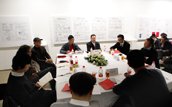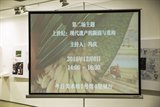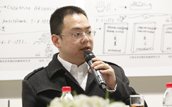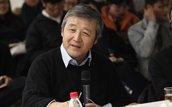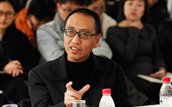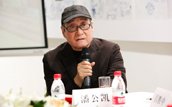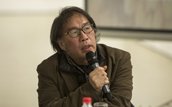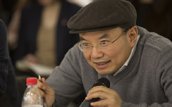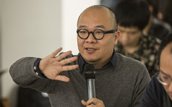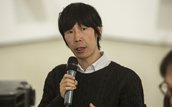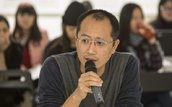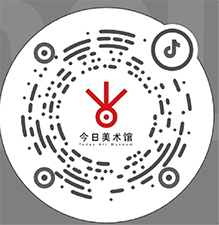Location: 4/F,Building No.1
Solidification and reconstruction of modern heritage (the second scene)
Back
Duration: 2015-12-06
--
2015-12-06
Location: 4/F,Building No.1
Location: 4/F,Building No.1
Seminar Introduction
6 afternoon second already, solidification and reconstruction of modern heritage, presided over by Feng Qing classical civilization research center, renmin university of China, participate in the discussion of the guests in addition to the first day of today art museum curator cao peng, the central academy of fine arts professor lu shengzhong, artists, curators ou ning, and tsinghua university humanities college professor wang hui, a researcher at the Chinese academy of social sciences institute of philosophy Zhao Ting Yang, art historian Philip pan, a professor at the central academy of fine arts, central academy of fine arts professor surprisingly, curator peng feng, a professor at the university of Beijing, central academy of fine arts professor qiu zhijie, he the fragmented, head of the research center of Beijing. The guests continued to explore the "last century" from different perspectives. The rhetoric of "last century" was wrapped up in the sense of time in our times. We have a rupture with the problem consciousness of the last "century era", but we are uncertain about the prospect, passion and legal power of the new century. Another century in the future calls us to a different kind of modernity. "Last century" encourages aspirants to get rid of the sinking sense of history and step onto the historical stage of grand time.
Today art museum curator cao peng has carried on the simple opening speech, then this seminar host Feng Qing first pointed out that from the first seminar theme, combining with the experience of artistic creation lu shengzhong has long and some thought during the response to art, culture problem of experience accumulated in the lead, in the face of the subject of the last century, whether want to return to country, classical revival, analyze the history and trends, or make criticism and reflection, or reconstruction, or to pay attention to the public and regression law, we have to return to public life in response to problems left over by history.
Starting with a critique of western modernity and the modern view of time, professor wang hui points out that lu shengzhong's exhibition to some extent raises the perspective of the 21st century, the last century. It is too early to define the last century, the 20th century. There have been many disasters in these decades, and the 20th century was a major turning point for many people. The innovation in the 20th century was unprecedented, and it happened in such a dense way as this century. How to understand this century? How to understand the legacy? His exhibition offers a unique perspective on that century and even this century. Professor wang singled out lu xun, the man who first used the word in the 20th century. And reviewed at that time lu xun proposed this word when the thinking of the core background. How to define the main themes of the 20th century itself, from the very beginning to the present day, has been fruitless. And then talk about the two impressions of lu shengzhong exhibition, the first impression to the little red man as an example. Describes very different interpretations of space, time, fluidity and the major ideologies of the 20th century.
Zhao tingyang starts from the western modernity, and quotes the Chinese view of time and history, talking about the dislocation of time and history, or time and space, and using archaeology to tell us the significance of the historical scale of the Chinese people in all aspects. Lu's works actually contain a unique Chinese view of time.
Professor pan gongkai discussed the rapid development of the biennale from the perspective of globalization. Obviously, the globalization of the extension of modernity has its two-sided consequences. Positive is all over the world are happening at the same time, the concern is how to put the professional continue and continue to adhere to in the multicultural form the trend of globalization, international biennale art gallery, the differences between the more and more small, in different locations, different culture has inside the area to discuss such a relatively very universality of the system of contemporary art, actually for all people especially arts practitioners have more questions can be found.
Professor xichuan talked about the local nature of Mr. Lu's works. Mr. Lu combined modern art with the art museum in a kind of traditional folk language. When it comes to contemporary art, people always think about the relationship between cities and villages. Since the 20th century, rural culture has been the relationship between China's rural culture and China's own cities, as well as its relationship with the international community. In short, lu shengzhong's works are local, folk and folk, and at the same time, it is international.
Professor peng feng narrates the solidification and reconstruction of modern heritage from three aspects. First, at the peak of the post-modern era, like in the 1980s, some people said that modernity was an unfinished thing, so modernity was a finished thing. Second question, let's look at teacher lu's works. I think the works of the curator must be postmodern, but China is modern and participates in Chinese postmodern art. However, from a European and American perspective, it is postmodern art. So these two completely different perspectives, we see modern, westerners see post-modern. What are the reasons for this? Third, modernity and modernism are unchangeable and do not move at all. We usually according to the time, the clue, organizes our train of thought, possibly under such times condition becomes the spatial movement.
Ou ning pointed out the strong people's heritage in lu shengzhong's exhibition. In the 20th century, China stepped out of the imperial system and began to establish a modern country. Whether the republican regime or the people's democratic dictatorship, it was actually the time of civil rights. In the past, the imperial power was granted by heaven, but now it is delegated by the people. Taking the huizhou and guangdong diaolou as examples, we can see the different reflections after the entry of modern rural logic in China, and share the so-called solidification and reconstruction of modern heritage from the side.
From the perspective of exhibition, dong bingfeng talked about the period of Chinese contemporary art defined as modernism and modern art in the 1980s, and the period of contemporary art after 2000. From the general look to be driven by the new economy action global network art action, art show problem. When quickly entering the contemporary art system, it seems that there must be a lot of conditions or a dialogue mechanism to participate in the global art network. The concept of global art, which has been mentioned a lot in recent years, is a very complex interaction. There is a considerable locality in the world, in every locality, and in the west there is a characteristic or feature of globalization.
Professor qiu zhijie explores the concept of modern Chinese culture, as opposed to elegant culture, which has an identity connection. But it is often compared as the two major components of national culture, at least on the surface shows that the Chinese traditional society, the educated class is ink painting, the majority of the old in the more directly rooted in the culture, when it comes to the new folk culture, this is the old folk culture in the 20th century in China a situation. Today, due to the existing ideology has been excavated, folk culture has no function, relying on the function of the government and rescue preserved. In the 1950s, a large number of organizations emerged. Our display culture system was different from that in the west. These western art galleries updated their systems, engaged in social construction, and engaged in interaction. In this process, folk art has become a state that is independent of the traditional rootless society and grows in the greenhouse. It is not surprising that the image of formalism appears. Lovers' hall art has appeared in various places before, and new themes related to revolutionary practice, and various new themes combined with revolution, have been received in the folk.
Guest
Feng Qing,Wang Hui,Zhao Tingyang,Pan Gongkai,Xichuan,Peng Feng,Ou Ning,Dong Bingfeng,Qiu Zhijie,Lu Shengzhong,Gaopeng
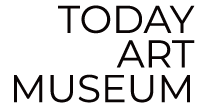
 Zhiguan: Wang Zimu Art Exhibition
Zhiguan: Wang Zimu Art Exhibition Seasons of Cezanne The Immersive Experience
Seasons of Cezanne The Immersive Experience Marie de Villein: Behind the Sun
Marie de Villein: Behind the Sun “一粒一世界——北京大学颗粒艺术展”
“一粒一世界——北京大学颗粒艺术展”
 Florentijn Hofman :Celebrate!
Florentijn Hofman :Celebrate! Li Nu: As if Sand Were Stone
Li Nu: As if Sand Were Stone Exhibition customization course | TIM YIP MIRROR children's art class
Exhibition customization course | TIM YIP MIRROR children's art class
 TAM Open Studio / Hello, New Friends
TAM Open Studio / Hello, New Friends WANG SHIKUO/TODAY ART MUSEUM YOUNG ARTIST RESIDENCY IN NEW YORK CITY
WANG SHIKUO/TODAY ART MUSEUM YOUNG ARTIST RESIDENCY IN NEW YORK CITY 2018 third wang shikuo award -- nomination exhibition of contemporary young artists
2018 third wang shikuo award -- nomination exhibition of contemporary young artists

